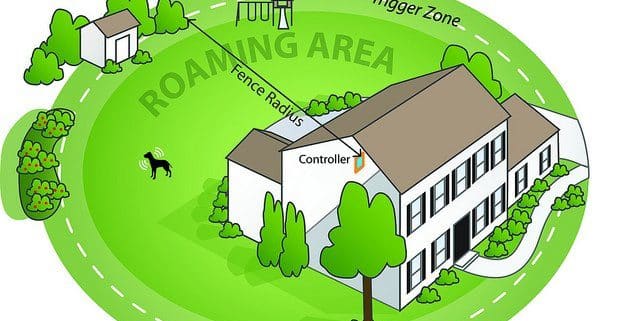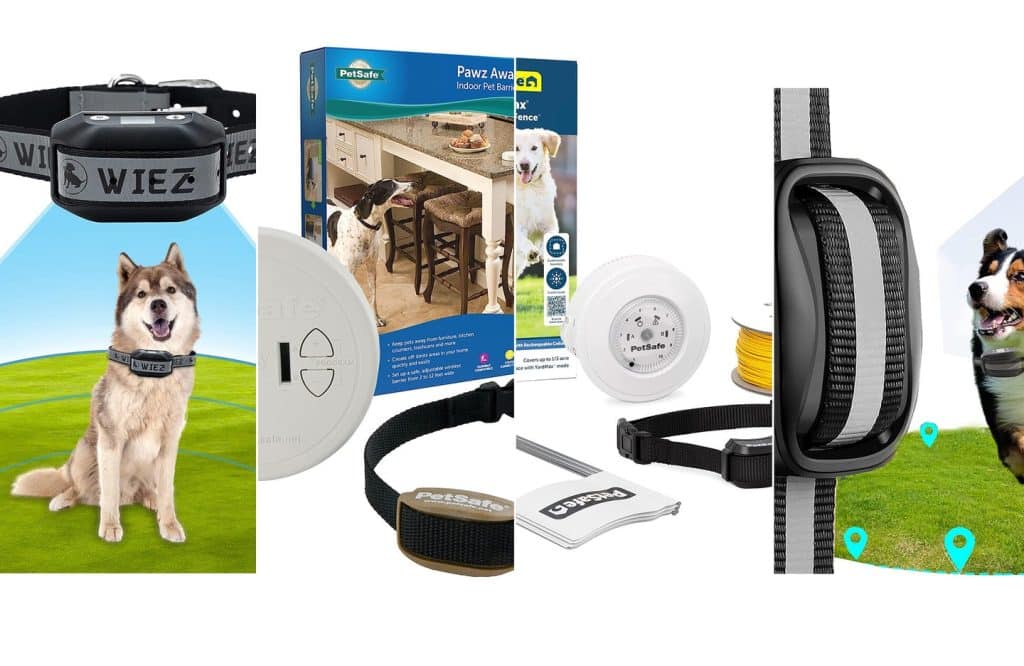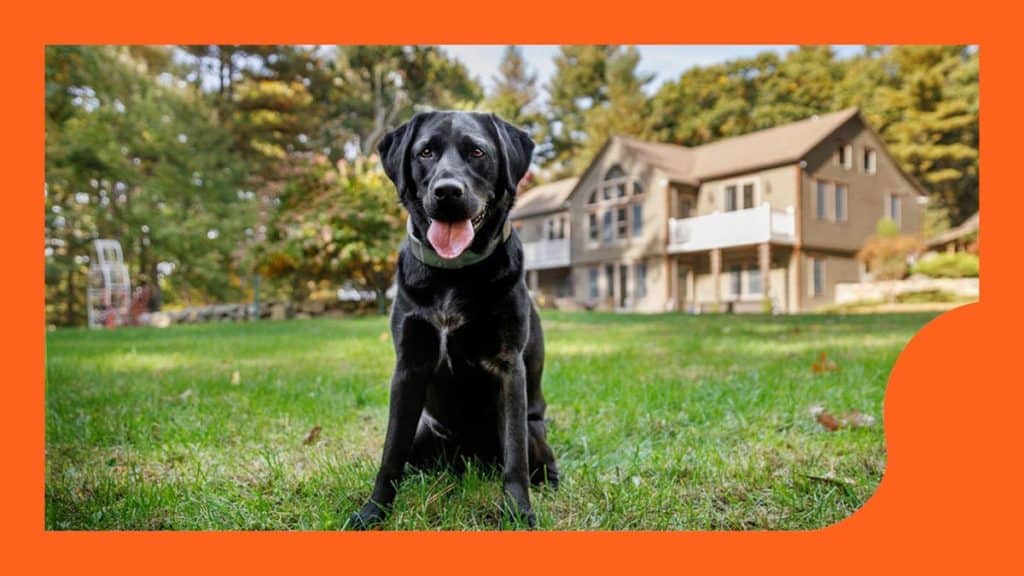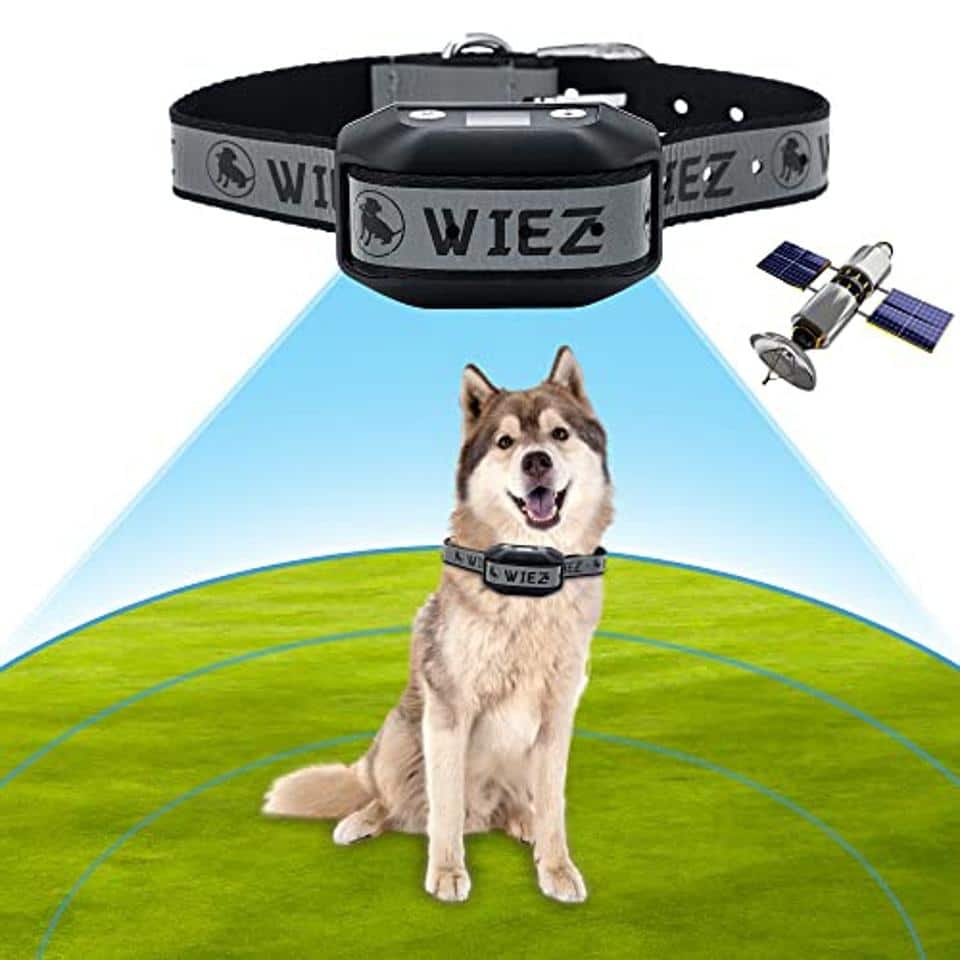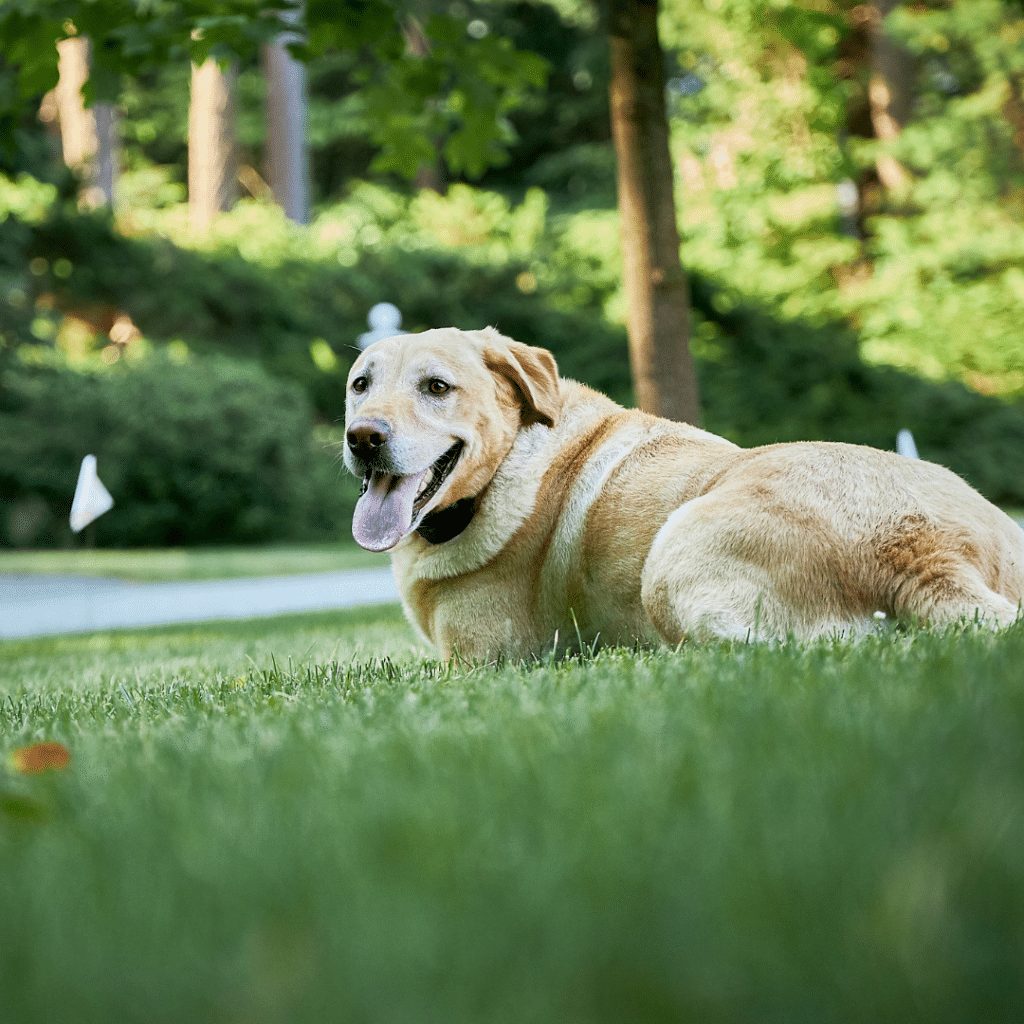We’ve all wondered about the safety of wireless dog fences for our furry friends. With so many options on the market, it’s natural to have concerns about their effectiveness and potential harm.
In this article, we’ll address the common questions surrounding wireless dog fences, exploring the pros and cons and the safety measures that can be taken to ensure our dogs’ well-being. So sit back, relax, and find out if wireless dog fences are a safe solution for our beloved pets.
Understanding Wireless Dog Fences
What is a wireless dog fence?
A wireless dog fence, also known as an invisible or electronic fence, is a device designed to keep dogs within a predefined area without physical barriers, such as traditional fences. It consists of two main components: a transmitter and a receiver collar. The transmitter emits a wireless signal that creates an invisible boundary. At the same time, the receiver collar worn by the dog detects the signal and delivers a static correction or a warning tone when the dog approaches the boundary.
How does a wireless dog fence work?
Wireless dog fences use radio frequency technology to establish the boundaries for your dog. The transmitter emits a signal that forms an invisible perimeter. The receiver collar worn by the dog picks up the signal and triggers a correction when the dog approaches the boundary. The correction can be a mild static shock, a vibration, or a high-pitched sound, depending on the chosen mode of the fence. Through training and positive reinforcement, dogs learn to associate the correction with the invisible boundary, thus staying within the designated area.
Types of wireless dog fences
Two main types of wireless dog fences are fully wireless and semi-wireless.
Fully wireless dog fences utilize only a transmitter and receiver collar. They are easier to set up since no physical wires are involved, making them a convenient option for those who don’t want to go through the hassle of burying wires or setting up physical boundaries. However, they may have limitations in terms of area coverage and can be affected by interference from other devices.
Semi-wireless dog fences, also known as in-ground fences, utilize a transmitter and a buried boundary wire. The wire acts as the boundary, while the transmitter generates the radio frequency signal. These fences offer more flexibility regarding area coverage and are less prone to interference. However, they require more effort during installation, as the wire needs to be buried or secured above ground.
Benefits of Wireless Dog Fences
No physical barriers
One of the main advantages of wireless dog fences is that they eliminate the need for physical barriers such as traditional fences or walls. This is particularly beneficial for dog owners living in areas where physical fences may not be allowed or practical. It allows dogs to roam freely within a designated area while providing containment and safety.
Cost-effective
Compared to traditional fencing options, wireless dog fences can be a more affordable solution. They typically require a one-time upfront investment to purchase the fence system, which is often cheaper than installing a physical fence. Wireless dog fences can cover larger areas, providing containment for dogs without requiring extensive and expensive fencing materials.
Ease of installation
Installing a wireless dog fence is relatively easy and can be done without professional assistance. Fully wireless systems require minimal setup, mainly involving placing the transmitter in a central location and adjusting the boundary range. Semi-wireless systems may require additional steps, such as burying the wire or securing it above ground. Overall, the installation process is user-friendly, allowing dog owners to quickly set up the fence and train their dogs.
Versatility
Wireless dog fences offer versatility in terms of boundary customization. Most systems allow users to adjust the boundary range to suit their needs and preferences. This makes wireless dog fences suitable for various types of properties, whether it’s a small urban yard or a larger rural area. Tailoring the containment area allows flexibility in accommodating different dog sizes and temperaments.
This image is the property of dogfence.co.uk.
Potential Risks and Concerns
Limited area coverage
One of the main limitations of wireless dog fences is the relatively limited area coverage compared to traditional fences. Fully wireless systems often have a circular boundary range, which may not be suitable for irregularly shaped properties or those requiring non-standard boundaries. This can be a drawback for dog owners with more significant properties or those who need to create specific containment zones within their property.
Interference from other devices
Wireless dog fences rely on radio frequency signals to function correctly, making them susceptible to interference from other electronic devices. Household appliances, wireless routers, and other wireless systems can potentially disrupt the signal, leading to unreliable boundary enforcement. While many modern wireless dog fences come with frequency hopping technology to minimize interference, it’s essential to consider potential sources of interference when choosing a wireless dog fence.
Inadequate training
Proper training is crucial when using a wireless dog fence. Without adequate training, dogs may not understand the boundaries or the consequences of crossing them. Investing time and effort in training sessions is essential to ensure that your dog understands the system and learns to stay within the boundary. Neglecting the training process can result in a poorly contained dog and render the wireless dog fence ineffective.
Lack of supervision
Although wireless dog fences provide a level of containment, they should not replace the need for supervision. Dogs can still be exposed to external threats, such as stray animals entering the containment area or potential dangers outside the boundaries. It’s essential to regularly check on your dog and provide supervision to ensure their safety and well-being.
Overcorrection
Some wireless dog fences correct static shocks to deter dogs from crossing boundaries. While the intensity of the correction can usually be adjusted, there is a risk of overcorrection if the level is too high. Overcorrection can cause unnecessary stress and anxiety in dogs, potentially leading to adverse behavioral or emotional effects. Choosing a wireless dog fence that offers adjustable correction levels and carefully monitors your dog’s reaction to ensure they are not subjected to excessive correction is crucial.
Factors to Consider for Safety
Dog’s temperament and behavior
Before installing a wireless dog fence, it’s essential to consider your dog’s temperament and behavior. Some dogs may be more sensitive to the correction or exhibit fearful or anxious behavior in response to the fence. It’s essential to assess your dog’s suitability for a wireless dog fence and to gradually introduce them to the system to ensure their comfort and well-being.
Training requirements
Training is a critical aspect of using a wireless dog fence. Dogs must be adequately trained to understand the boundaries and the consequences of crossing them. Different dogs may require varying levels of training, so it’s crucial to invest time and effort in training sessions. Consistency, positive reinforcement, and patience are key elements in training to ensure the best outcome for your dog’s safety and containment.
Proper collar fit
The receiver collar worn by the dog plays a significant role in the effectiveness and safety of the wireless dog fence. Ensuring the collar fits properly without being too tight or loose is essential. A properly fitted collar allows for optimal functioning and comfort for the dog. Regular check-ups of the collar fit are necessary, especially as dogs grow or if multiple dogs use the same wireless dog fence system.
Monitoring system performance
Regularly monitoring the performance of the wireless dog fence is crucial for safety purposes. Check for proper signal transmission, ensure the receiver collar functions correctly, and regularly test the boundaries to ensure they are adequately enforced. If any issues or malfunctions are detected, contact the manufacturer or a professional technician to address the problem promptly.
This image is the property of www.popsci.com.
Training and Transitioning Process
Gradual introduction to the area
It is essential to take a gradual approach when introducing your dog to a wireless dog fence. Start by allowing your dog to explore the area while keeping them on a leash. This allows them to become familiar with the boundaries and the associated correction or warning signals. As your dog becomes more comfortable, gradually introduce off-leash sessions within the containment area, always under close supervision.
Positive reinforcement
Positive reinforcement is an effective training tool when using a wireless dog fence. Reward your dog with praise, treats, or toys by staying within the boundaries when they exhibit desired behavior. This positive association reinforces the understanding that staying within the designated area is rewarding, encouraging your dog to comply with the boundaries.
Avoiding stressful situations
During training, avoiding exposing your dog to stressful situations that may contribute to negative associations with the wireless dog fence is essential. This includes avoiding distractions such as loud noises, unfamiliar individuals or animals entering the containment area, or any other situations that may cause undue stress or anxiety for your dog. Gradual exposure in a controlled and positive environment can help ensure a stress-free transition for your dog.
Supervised training sessions
Supervision is crucial during training to ensure your dog’s safety and provide immediate guidance when needed. Be present during training sessions to observe your dog’s behavior and intervene actively if necessary. This hands-on approach allows you to reinforce the boundaries and correct any potential misunderstandings or misbehavior.
Recognizing warning signs
It’s essential to be attentive to any warning signs exhibited by your dog during the training and transition process. Signs of anxiety, stress, or refusal to enter the containment area may indicate that your dog is struggling with the wireless dog fence. In such cases, it may be necessary to reassess your dog’s suitability for this containment method or seek professional guidance from a dog trainer or behaviorist.
Choosing the Right Wireless Dog Fence
Consider your dog’s size.
When choosing a wireless dog fence, it’s essential to consider your dog’s size and specific containment needs. Some wireless dog fences are designed for smaller dogs, while others are suitable for larger breeds. Ensure that the selected system can cater to your dog’s size and provide adequate containment regarding boundary range and correction levels.
Research different fence models.
Take the time to research and compare different wireless dog fence models available in the market. Read product descriptions, specifications, and customer reviews to understand each system’s features and performance better. Look for reputable brands with a track record of providing reliable and safe wireless dog fences.
Read customer reviews
Customer reviews can provide valuable insights into the real-life experiences of other dog owners. Read both positive and negative reviews to understand the pros and cons of different wireless dog fence models. Look for recurring themes or common issues customers mention, and consider how important those factors are to you and your dog.
Evaluate additional features
Wireless dog fences may have additional features or accessories that enhance usability and safety. Some systems offer adjustable correction levels, rechargeable collars, or compatibility with multiple dogs. When evaluating these additional features, consider your specific needs and preferences, and choose a system that aligns with your requirements.
This image is the property of imageio.forbes.com.
Common Misconceptions About Wireless Dog Fences
They cause harm to dogs.
One common misconception about wireless dog fences is that they cause harm or pain to dogs due to the correction they deliver. However, when properly used and adjusted to the appropriate level, the correction is not intended to cause harm but to act as a deterrent. The static shocks or other forms of correction are relatively mild and can be compared to the static electricity one might experience from rubbing one’s feet on a carpet.
They can replace supervision.
While wireless dog fences provide containment, they should never replace the need for supervision. Dogs can still face risks and threats within the containment area, such as the entry of other animals or exposure to potential dangers. It is essential to check on your dog for their safety regularly and to address any potential issues with the wireless dog fence system.
They are ineffective for stubborn dogs.
Another misconception is that wireless dog fences are ineffective for stubborn dogs. While it is true that some stubborn or strong-willed dogs may require additional training or reinforcement, wireless dog fences can still be effective containment solutions. With the proper training techniques, consistency, and positive reinforcement, even stubborn dogs can learn to respect the boundaries and stay within the designated area.
Alternatives to Wireless Dog Fences
Traditional visible fences
Traditional visible fences, such as wooden or chain-link fences, are a popular alternative to wireless dog fences. These physical barriers provide a clear and visible boundary for dogs, offering a high level of containment and security. However, they can be more expensive and require maintenance and upkeep over time.
In-ground electronic fences
In-ground electronic fences, also known as wired or underground fences, are another alternative option. These systems use a buried wire to establish the boundaries, and the dog wears a receiver collar that detects the signal and triggers a correction. In-ground fences offer more flexibility in boundary customization and are generally unaffected by interference. However, they require more effort during installation, as the wire needs to be buried or secured above ground.
Tethering or leash systems
Tethering or leash systems involve securing the dog to a stationary object, such as a post or stake, using a leash or tether. This provides a certain level of containment and control during outdoor activities. However, it restricts the dog’s freedom to roam and may limit their ability to engage in natural behaviors such as running or playing freely.
This image is the property of specials-images.forbesimg.com.
Expert Opinions and Studies
Veterinarians’ thoughts
Many veterinarians recognize the benefits of wireless dog fences when used responsibly and in conjunction with proper training. They emphasize that wireless dog fences can allow dogs to explore and exercise while maintaining a level of containment and safety. However, they also emphasize the importance of supervision, training, and considering each dog’s needs and temperament.
Experiences from dog trainers
Dog trainers have differing opinions on the effectiveness of wireless dog fences. Some trainers believe they can be valuable tools when used correctly and in combination with practical training techniques. Others may prefer alternative containment methods or have concerns about wireless dog fences’ potential risks and limitations. It’s essential to consult a reputable dog trainer who can assess your situation and offer guidance tailored to your dog’s needs.
Results from research studies
Several research studies have been conducted to evaluate the effectiveness and safety of wireless dog fences. While the research is ongoing and opinions may vary, some studies have shown positive results in terms of containment rates and the overall well-being of dogs. However, it is essential to note that research studies may differ in methodologies and findings, and more research is needed to provide comprehensive and conclusive evidence.
Conclusion
Wireless dog fences can be a valuable tool for owners looking for a safe and effective way to contain their dogs. With proper training, supervision, and considerations for individual dog characteristics, wireless dog fences can provide dogs with the freedom to roam while keeping them within designated boundaries.
It’s important to carefully evaluate the potential risks and benefits, choose a reputable and suitable wireless dog fence system, and prioritize the well-being and safety of your furry friend.
This image is the property of www.dogwatch.com.


